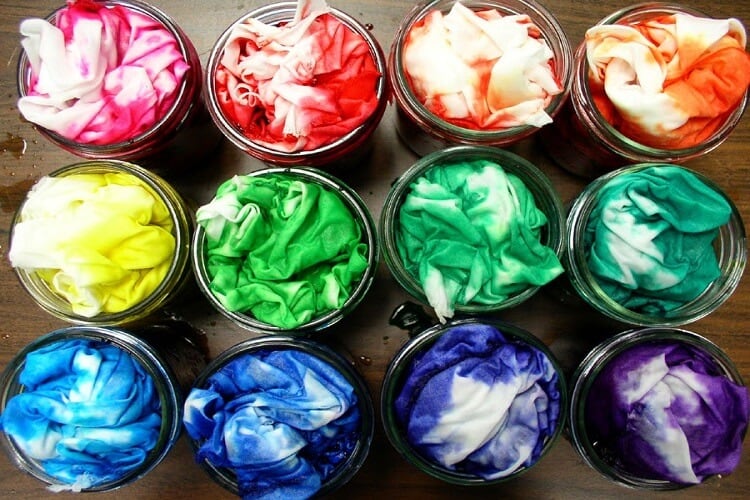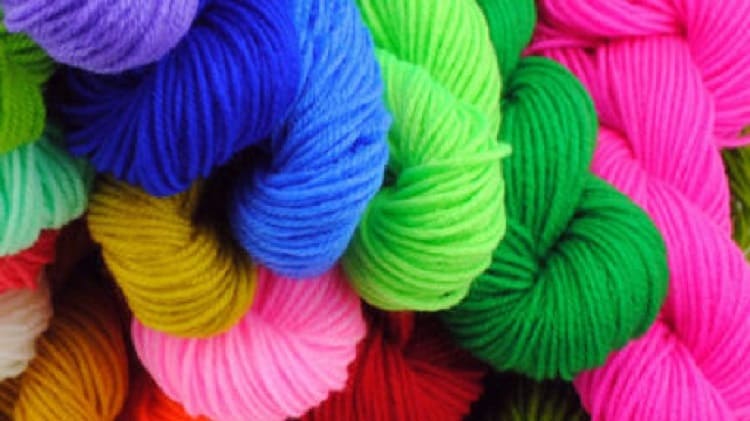Do you have any idea what is color fastness? Why in the industry of textile and fabric do we need to emphasize it more than anything else? If you need some information about it, then you have landed in the right place. This article will let you know all about it and some other interrelated things that can guide you in the best way possible. Read this article until the end so you can jot down the details correctly without missing out on something.
Colorfastness is also known as dye fastness. It indicates the resistance of fabric colors to effects, including the change of color or transfer at the time of processing and usage. The fastness includes the degree of colorfastness of the cloth and is examined based upon the discoloration of a sample and the staining of the lining fabric that isn’t dyed.
At the time of usage, textiles are mostly exposed to numerous external that includes sweat, washing, light, ironing, friction, and other chemical agents. Some printed and dyed materials are also subjected to specific finishing processes, like flame retardant finishing, sand-washing, resin finishing, and grinding. This requires that the color of fabric and dyed textiles usually keep a certain level of fastness, i.e., good color fastness performance.

6 Different Types Of Color Fastness Tests
Following are the Six Different Types of Colorfastness that you Should Know About:
1. Color Fastness to Rubbing
Colorfastness rubbing indicates the level of color fading of dyed fabrics after rubbing. This can be in two forms, such as from dry or wet rubbing. The rubbing fastness can be decided from the degree of a prespecified white cloth’s staining, and it is graded in 5 different levels. The larger the value it will have, the better the rubbing fastness will be.
2. Washing Color Fastness
Washing or soaping fastness denotes the degree of the color change of dyed fabric after washing with a liquid. A gray graded sample card is mainly utilized as the evaluation standard; the color difference between the actual sample and the faded sample is used for judgment.
Washing fastness is classified into five levels; grade 5 is considered the best, while grade 1 is the worst level of washing fastness. The cloth that is of poor washing fastness should be dry-cleaned. But if they must be wet-washed, other washing conditions may require to be adjusted and watched closely. For example, the washing temperature should not be high, and the washing time should be kept in mind and should not exceed form the limit.
3. Lightfastness
This category refers to the degree of discoloration of dyed cloth when exposed to sunlight. The Color Fastness to light test matches the degree of fade of the sample after simulating sunlight with a standard color sample segmented into eight grades; 8, as a result, implies the best while 1 implies the worst lightfastness.
Apart from that, for fabrics to stay in optimal condition, they should not be exposed to sunlight for long periods, and they always are dried in a place where direct sunlight doesn’t fall.
4. Color Fastness to Perspiration
It is the capacity, not to fade and not to stain when the dyed fabric is perspired. People’s sweat has a complicated composition, and it’s mainly based on salt. Sweat is further divided into acidity and basicity because of the differences in people.
The perspiration fastness test utilizes artificial perspiration with different acids to imitate the sweat situation when humans wear textiles and then test the textiles. The machine that is used to test perspiration fastness is known as the perspiration fastness tester.
5. Color Fastness to Sublimation
It refers to the capability to keep the actual color of dyed fabrics under the circumstances of additional heat. The test for this category was done in dry, wet environments, tide, based on the textiles.
The machine that uses in the heat colorfastness test is the Ironing Sublimation Color Fastness Tester. While testing, dyed sample pasting with one or multiple prescribed closing fabric contact with heating device, heated in a particular time under specific heat and pressure.
6. Ironing Color Fastness
This indicates the limit where dyed fabrics may discolor or fade from ironing. When colorfastness test to ironing, you should iron the samples with a very hot iron. After the fabric has cooled, you can compare both the actual fabric and ironed fabric. If the ironed fabric’s color alters, then it is said to be not colorfast. If the color stays the same, the fabric is fast to ironing.

Factors that Affect Color Fastness
Did you ever wonder why some fabrics are colorfast and why some are not? There must be some factors behind it that decide the whole logic behind it. The following factors help us in determining what and why some fabrics are colorfast:
- Every single thread has different properties. For example, polyester is usually colorfast instead of nylon.
- The color. As compared to lighter shades, darker ones are less colorfast.
- How a dyed fabric has been finished and fixed is are significant factors that explain all the schemes behind colorfast.
- The structure and characteristics of fabric dyes used.
- The properties of the fabric itself determine whether or not it is colorfast.
- Any cloth pre-treatments that have been used.
- Any damage to the surface of the fabric and finishes that have been used.
- The process of dying and if fabrics have undergone soaping after dyeing.
How To Do Color Fastness?
One needs to keep in mind a few things when it comes to color fastening without much hassle. Have a look at the below step and find out the best way through which it can be done:
- Add one teaspoon of the laundry product such as oxygen bleach, stain remover, detergent, or chlorine bleach with 1/2 cup of warm water. Mix it properly and ensure that the powdered formulas are correctly dissolved.
- Now turn to an internal seam or hem. If you are worried that the solution will bleed through to the right side of the fabric, you can place a dry, white cotton cloth under the test area.
- Now plunge a cotton swab in the solution and press it onto the test area.
- Spot the area with a white paper towel. If the color comes off onto the white paper towel, the cloth will bleed dye. Color of the test area has altered or become lighter, the dye will bleed.
- If you have a fabric with different colors, graphic print, strips, or color blocks, test each colored area individually.
How To Test Color Fastness
All fabric manufacturing companies prefer the tests they pick to utilize to decide the fabric’s colorfastness, but there are multiple international quality testing standards. These tests include CNS, AATCC, ISO, and JIS. While the tests have some variation, they all follow the similar method garments mostly go through daily.
The test fabric is then evaluated for the level of fade, or a strip of non-dyed, multi-fiber material is also contained in the test and then checked for the level of staining. It is mainly observed at the lab-dip stage of production. So that’s the time when a supplier will inform a buyer if fabric reaches the needed colorfast standards.
How Does Color Fastness Evaluate?
There are two main tips to keep in mind when it comes to analyzing the colorfastness. Have a look and find out:
- Just looking at the fabric that you need to be examined can assist you and let you come up with an assessment. But there are a few issues with this method. If you are having any level of color blindness or color deficiency, you might not be capable of knowing what you are seeing. Even if that’s not an issue, then there is the possibility that the same fabric can look very different in different lighting conditions and under other light sources.
- To save yourself from any issue, you need a Color Assessment Cabinet. This machine consistently imitates multiple light sources and makes your visual assessment of color far better than you can think of. You can put the tested fabric with the non-tested fabric or the non-dyed one into the machine and arrange a suitable light source. There are some familiar light sources for color checking contain:
- TL84 – the light most commonly used in shops in China, Europe, and Japan
- D65, which mimics daylight
- U30 – the warm white light utilized in stores in the US
- CWF – the cool white light utilized in stores in the US

How To Improve Color Fastness?
Below are some of the things that Manufacturers can keep in mind when Improving Colorfastness.
- At times you will find that the fabric color you need to go for isn’t as colorfast as it should be. In such cases, a color fixing agent can be utilized during the dyeing process to improve colorfastness.
- Though, there are limitations. The color of your fabric has a considerable part in it. For instance, light colors are more likely than dark colors to fade under bright light. And bright, neon, and dark shades are most probably than light colors are a cause of staining.
- If the fabric is made from usual polyester, there is this possibility to improve the color fastness by modifying the yarn to cationic polyester. Though cationic polyester can not enhance the colorfastness to light, and the cost is a lot higher.
How Can Color Fading Be Prevented?
If you need to know how to Prevent Color Fading, then have a look at the Below Steps to Find Out what Needs to be done:
- Ensure that you utilize the correct water temperature for the cloth as specified on the care label.
- Ensure you utilize the suitable detergent powder when a specific type is mentioned on the care label.
- Don’t wash clothes in the washing machine that says explicitly “hand washes only.”
- Bringing clothes to the cleaners for dry cleaning when the care label says it is necessary.
- Curing particular textiles that are disposed to fade during washing.
Conclusion
Without any doubt, we can say that colorfastness is essential in our daily lives because who would like to roam around in fades clothes? Apart from that, manufacturers need to keep the significance of colorfastness in mind, so they follow all the necessary steps when it comes to testing fabric.
If companies don’t follow the specified instructions that are made to know whether or not the cloth has solid colors, then there are chances that they don’t find customers who will stick up for them in the long run.
To win the hearts of your buyers, you need to make sure that everything the whole process of color fastening has been done correctly, from the start till the end, as it ensures you the promise of your trusted clients and will most probably boost your business.
